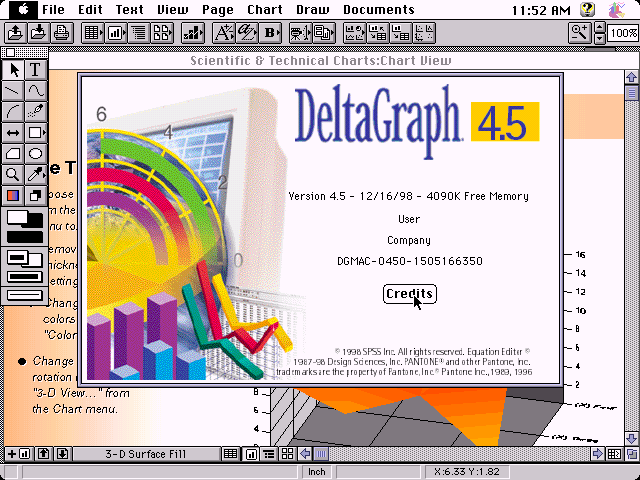

I would work 90 hour weeks for the next four months to completely rewrite the interface while supporting the old one so the other two could keep working. Now that I could see other people's work it didn't measure up.
DELTAGRAPH SCAM FREE
This was the first time I really saw what other people were doing (remember no websites, no free demos, spending money to even see an app) and was horrified by the interface I had designed. In August we all went to Macworld Boston where we started doing press demos in a hotel room as well as wandering the floor looking at other people's apps.
DELTAGRAPH SCAM MANUAL
In fact it had to be informal as when we started C didn't even have prototypes - you had to manually make sure a function's parameter and calls matched! We also had no repository as there they weren't available on MacOS at the time, so we had to have a manual process to keep track of files.

We organized the app development into three pieces with a reasonable contract on an informal API.

We didn't even know that word and we never gave much thought to processes. Today people think everyone did Waterfall in the "old days".
DELTAGRAPH SCAM MAC
In May of 1986 I went to the first Apple developer conference (not yet named WWDC) where basically the entire world of Mac developers showed up - we all fit in a single hotel ballroom! During the week Apple took us out on a boat in SF harbor for some fun, we all though it would be funny if we sank and the whole Mac industry vanished with us. We used C even though Apple had mostly Pascal interfaces because I thought C was the future.ĭevelopment was slow as we were basically inventing a new idea, working in a new language on a new platform, and on ridiculously slow machines (5 and 8 MHz) with tiny screens compared to today. At some point we started using Lightspeed-C (later named Think C) which helped a lot. The linker spent most of its time drawing icons on the screen. At first we used some C compiler who's name I don't remember, it was pretty slow. I used the XL and the other two developers could access the hard drive over Appletalk. We had two 512K Macs and one Mac XL (a Lisa running MacOS) that had a small hard drive we all shared.
DELTAGRAPH SCAM SOFTWARE
Just finding out what software existed meant reading ads or magazine reviews or a computer show. If you wanted to know what a piece of software did you had to buy a copy. Learning meant libraries, or magazines, or maybe a user group. There was little email (at my first job I had an email address outside of work but I only knew one person with one - my boss - and we sat next to each other at work) and of course no internet. I remember talking with a banker who upon hearing we were going to work on software thought we were making lingerie! The whole idea of software was unfamiliar to many. As it is today there were people who liked to invest in new ideas but unlike today many of them had no idea what we were doing. Like any young person with an idea I got people I knew excited and we got a group of investors together. I quit my job in late 1984 and then came up with the idea that became Trapeze. So what was it like back then in the dark ages? Quite different than today in many ways not so different in others. We worked on the presentation app Persuasion (for the author) and then spent 6 years working on Deltagraph for its publisher.

It shipped in January 1987 but by the end of the year we sold it and then I started a new company to just develop for other people. By 1985 I started my first company to develop and then sell a spreadsheet like application for the Mac called Trapeze. I started my career in 1981 working for 3 years at a defense contractor.


 0 kommentar(er)
0 kommentar(er)
